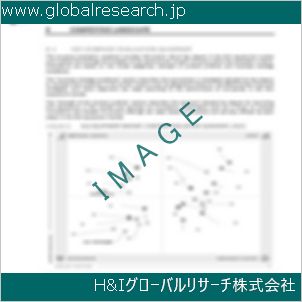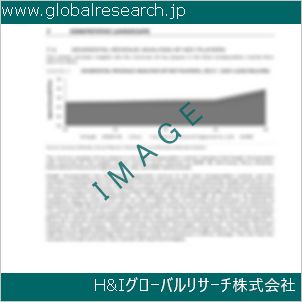1 Carbon Fiber for Wind Energy Market Overview
1.1 Product Definition
1.2 Carbon Fiber for Wind Energy Segment by Type
1.2.1 Global Carbon Fiber for Wind Energy Market Value Growth Rate Analysis by Type 2022 VS 2029
1.2.2 48K
1.2.3 24K
1.2.4 Below 12K
1.3 Carbon Fiber for Wind Energy Segment by Application
1.3.1 Global Carbon Fiber for Wind Energy Market Value Growth Rate Analysis by Application: 2022 VS 2029
1.3.2 Onshore Wind Turbine Blades
1.3.3 Offshore Wind Turbine Blades
1.4 Global Market Growth Prospects
1.4.1 Global Carbon Fiber for Wind Energy Production Value Estimates and Forecasts (2018-2029)
1.4.2 Global Carbon Fiber for Wind Energy Production Capacity Estimates and Forecasts (2018-2029)
1.4.3 Global Carbon Fiber for Wind Energy Production Estimates and Forecasts (2018-2029)
1.4.4 Global Carbon Fiber for Wind Energy Market Average Price Estimates and Forecasts (2018-2029)
1.5 Assumptions and Limitations
2 Market Competition by Manufacturers
2.1 Global Carbon Fiber for Wind Energy Production Market Share by Manufacturers (2018-2023)
2.2 Global Carbon Fiber for Wind Energy Production Value Market Share by Manufacturers (2018-2023)
2.3 Global Key Players of Carbon Fiber for Wind Energy, Industry Ranking, 2021 VS 2022 VS 2023
2.4 Global Carbon Fiber for Wind Energy Market Share by Company Type (Tier 1, Tier 2 and Tier 3)
2.5 Global Carbon Fiber for Wind Energy Average Price by Manufacturers (2018-2023)
2.6 Global Key Manufacturers of Carbon Fiber for Wind Energy, Manufacturing Base Distribution and Headquarters
2.7 Global Key Manufacturers of Carbon Fiber for Wind Energy, Product Offered and Application
2.8 Global Key Manufacturers of Carbon Fiber for Wind Energy, Date of Enter into This Industry
2.9 Carbon Fiber for Wind Energy Market Competitive Situation and Trends
2.9.1 Carbon Fiber for Wind Energy Market Concentration Rate
2.9.2 Global 5 and 10 Largest Carbon Fiber for Wind Energy Players Market Share by Revenue
2.10 Mergers & Acquisitions, Expansion
3 Carbon Fiber for Wind Energy Production by Region
3.1 Global Carbon Fiber for Wind Energy Production Value Estimates and Forecasts by Region: 2018 VS 2022 VS 2029
3.2 Global Carbon Fiber for Wind Energy Production Value by Region (2018-2029)
3.2.1 Global Carbon Fiber for Wind Energy Production Value Market Share by Region (2018-2023)
3.2.2 Global Forecasted Production Value of Carbon Fiber for Wind Energy by Region (2024-2029)
3.3 Global Carbon Fiber for Wind Energy Production Estimates and Forecasts by Region: 2018 VS 2022 VS 2029
3.4 Global Carbon Fiber for Wind Energy Production by Region (2018-2029)
3.4.1 Global Carbon Fiber for Wind Energy Production Market Share by Region (2018-2023)
3.4.2 Global Forecasted Production of Carbon Fiber for Wind Energy by Region (2024-2029)
3.5 Global Carbon Fiber for Wind Energy Market Price Analysis by Region (2018-2023)
3.6 Global Carbon Fiber for Wind Energy Production and Value, Year-over-Year Growth
3.6.1 United States Carbon Fiber for Wind Energy Production Value Estimates and Forecasts (2018-2029)
3.6.2 Europe Carbon Fiber for Wind Energy Production Value Estimates and Forecasts (2018-2029)
3.6.3 China Carbon Fiber for Wind Energy Production Value Estimates and Forecasts (2018-2029)
3.6.4 Japan Carbon Fiber for Wind Energy Production Value Estimates and Forecasts (2018-2029)
4 Carbon Fiber for Wind Energy Consumption by Region
4.1 Global Carbon Fiber for Wind Energy Consumption Estimates and Forecasts by Region: 2018 VS 2022 VS 2029
4.2 Global Carbon Fiber for Wind Energy Consumption by Region (2018-2029)
4.2.1 Global Carbon Fiber for Wind Energy Consumption by Region (2018-2023)
4.2.2 Global Carbon Fiber for Wind Energy Forecasted Consumption by Region (2024-2029)
4.3 North America
4.3.1 North America Carbon Fiber for Wind Energy Consumption Growth Rate by Country: 2018 VS 2022 VS 2029
4.3.2 North America Carbon Fiber for Wind Energy Consumption by Country (2018-2029)
4.3.3 United States
4.3.4 Canada
4.4 Europe
4.4.1 Europe Carbon Fiber for Wind Energy Consumption Growth Rate by Country: 2018 VS 2022 VS 2029
4.4.2 Europe Carbon Fiber for Wind Energy Consumption by Country (2018-2029)
4.4.3 Germany
4.4.4 France
4.4.5 U.K.
4.4.6 Italy
4.4.7 Russia
4.5 Asia Pacific
4.5.1 Asia Pacific Carbon Fiber for Wind Energy Consumption Growth Rate by Region: 2018 VS 2022 VS 2029
4.5.2 Asia Pacific Carbon Fiber for Wind Energy Consumption by Region (2018-2029)
4.5.3 China
4.5.4 Japan
4.5.5 South Korea
4.5.6 China Taiwan
4.5.7 Southeast Asia
4.5.8 India
4.6 Latin America, Middle East & Africa
4.6.1 Latin America, Middle East & Africa Carbon Fiber for Wind Energy Consumption Growth Rate by Country: 2018 VS 2022 VS 2029
4.6.2 Latin America, Middle East & Africa Carbon Fiber for Wind Energy Consumption by Country (2018-2029)
4.6.3 Mexico
4.6.4 Brazil
4.6.5 Turkey
5 Segment by Type
5.1 Global Carbon Fiber for Wind Energy Production by Type (2018-2029)
5.1.1 Global Carbon Fiber for Wind Energy Production by Type (2018-2023)
5.1.2 Global Carbon Fiber for Wind Energy Production by Type (2024-2029)
5.1.3 Global Carbon Fiber for Wind Energy Production Market Share by Type (2018-2029)
5.2 Global Carbon Fiber for Wind Energy Production Value by Type (2018-2029)
5.2.1 Global Carbon Fiber for Wind Energy Production Value by Type (2018-2023)
5.2.2 Global Carbon Fiber for Wind Energy Production Value by Type (2024-2029)
5.2.3 Global Carbon Fiber for Wind Energy Production Value Market Share by Type (2018-2029)
5.3 Global Carbon Fiber for Wind Energy Price by Type (2018-2029)
6 Segment by Application
6.1 Global Carbon Fiber for Wind Energy Production by Application (2018-2029)
6.1.1 Global Carbon Fiber for Wind Energy Production by Application (2018-2023)
6.1.2 Global Carbon Fiber for Wind Energy Production by Application (2024-2029)
6.1.3 Global Carbon Fiber for Wind Energy Production Market Share by Application (2018-2029)
6.2 Global Carbon Fiber for Wind Energy Production Value by Application (2018-2029)
6.2.1 Global Carbon Fiber for Wind Energy Production Value by Application (2018-2023)
6.2.2 Global Carbon Fiber for Wind Energy Production Value by Application (2024-2029)
6.2.3 Global Carbon Fiber for Wind Energy Production Value Market Share by Application (2018-2029)
6.3 Global Carbon Fiber for Wind Energy Price by Application (2018-2029)
7 Key Companies Profiled
7.1 Toray Industries
7.1.1 Toray Industries Carbon Fiber for Wind Energy Corporation Information
7.1.2 Toray Industries Carbon Fiber for Wind Energy Product Portfolio
7.1.3 Toray Industries Carbon Fiber for Wind Energy Production, Value, Price and Gross Margin (2018-2023)
7.1.4 Toray Industries Main Business and Markets Served
7.1.5 Toray Industries Recent Developments/Updates
7.2 SGL Carbon
7.2.1 SGL Carbon Carbon Fiber for Wind Energy Corporation Information
7.2.2 SGL Carbon Carbon Fiber for Wind Energy Product Portfolio
7.2.3 SGL Carbon Carbon Fiber for Wind Energy Production, Value, Price and Gross Margin (2018-2023)
7.2.4 SGL Carbon Main Business and Markets Served
7.2.5 SGL Carbon Recent Developments/Updates
7.3 Tejin
7.3.1 Tejin Carbon Fiber for Wind Energy Corporation Information
7.3.2 Tejin Carbon Fiber for Wind Energy Product Portfolio
7.3.3 Tejin Carbon Fiber for Wind Energy Production, Value, Price and Gross Margin (2018-2023)
7.3.4 Tejin Main Business and Markets Served
7.3.5 Tejin Recent Developments/Updates
7.4 Mitsubishi Chemical
7.4.1 Mitsubishi Chemical Carbon Fiber for Wind Energy Corporation Information
7.4.2 Mitsubishi Chemical Carbon Fiber for Wind Energy Product Portfolio
7.4.3 Mitsubishi Chemical Carbon Fiber for Wind Energy Production, Value, Price and Gross Margin (2018-2023)
7.4.4 Mitsubishi Chemical Main Business and Markets Served
7.4.5 Mitsubishi Chemical Recent Developments/Updates
7.5 Hexcel
7.5.1 Hexcel Carbon Fiber for Wind Energy Corporation Information
7.5.2 Hexcel Carbon Fiber for Wind Energy Product Portfolio
7.5.3 Hexcel Carbon Fiber for Wind Energy Production, Value, Price and Gross Margin (2018-2023)
7.5.4 Hexcel Main Business and Markets Served
7.5.5 Hexcel Recent Developments/Updates
7.6 FPC
7.6.1 FPC Carbon Fiber for Wind Energy Corporation Information
7.6.2 FPC Carbon Fiber for Wind Energy Product Portfolio
7.6.3 FPC Carbon Fiber for Wind Energy Production, Value, Price and Gross Margin (2018-2023)
7.6.4 FPC Main Business and Markets Served
7.6.5 FPC Recent Developments/Updates
7.7 DowAksa
7.7.1 DowAksa Carbon Fiber for Wind Energy Corporation Information
7.7.2 DowAksa Carbon Fiber for Wind Energy Product Portfolio
7.7.3 DowAksa Carbon Fiber for Wind Energy Production, Value, Price and Gross Margin (2018-2023)
7.7.4 DowAksa Main Business and Markets Served
7.7.5 DowAksa Recent Developments/Updates
7.8 Zhongfu Shenying
7.8.1 Zhongfu Shenying Carbon Fiber for Wind Energy Corporation Information
7.8.2 Zhongfu Shenying Carbon Fiber for Wind Energy Product Portfolio
7.8.3 Zhongfu Shenying Carbon Fiber for Wind Energy Production, Value, Price and Gross Margin (2018-2023)
7.8.4 Zhongfu Shenying Main Business and Markets Served
7.7.5 Zhongfu Shenying Recent Developments/Updates
8 Industry Chain and Sales Channels Analysis
8.1 Carbon Fiber for Wind Energy Industry Chain Analysis
8.2 Carbon Fiber for Wind Energy Key Raw Materials
8.2.1 Key Raw Materials
8.2.2 Raw Materials Key Suppliers
8.3 Carbon Fiber for Wind Energy Production Mode & Process
8.4 Carbon Fiber for Wind Energy Sales and Marketing
8.4.1 Carbon Fiber for Wind Energy Sales Channels
8.4.2 Carbon Fiber for Wind Energy Distributors
8.5 Carbon Fiber for Wind Energy Customers
9 Carbon Fiber for Wind Energy Market Dynamics
9.1 Carbon Fiber for Wind Energy Industry Trends
9.2 Carbon Fiber for Wind Energy Market Drivers
9.3 Carbon Fiber for Wind Energy Market Challenges
9.4 Carbon Fiber for Wind Energy Market Restraints
10 Research Finding and Conclusion
11 Methodology and Data Source
11.1 Methodology/Research Approach
11.1.1 Research Programs/Design
11.1.2 Market Size Estimation
11.1.3 Market Breakdown and Data Triangulation
11.2 Data Source
11.2.1 Secondary Sources
11.2.2 Primary Sources
11.3 Author List
11.4 Disclaimer
| ※参考情報 風力エネルギー用カーボンファイバーは、持続可能なエネルギー源の一つである風力発電において重要な材料となっています。この材料は、風車のブレードなどの構造体に使用され、その軽量性や強度から、風力発電の効率を向上させる役割を果たします。ここでは、風力エネルギー用カーボンファイバーの概念について詳しく述べます。 カーボンファイバーの定義としては、高強度・高弾性率を持つ炭素繊維のことを指します。これらの繊維はポリマーやエポキシ樹脂と組み合わせて複合材料として利用され、特に風力エネルギーの分野において非常に重要な役割を果たしています。カーボンファイバーは、従来の金属やグラスファイバーに比べて軽量でありながら、高い強度と耐久性を持っています。このため、風車のブレードなどの大きな構造物に使用することで、エネルギー効率を向上させることができます。 カーボンファイバーの特徴の一つは、軽量性です。風車のブレードは風の力を受けるため、その重量は発電効率に影響を与えます。カーボンファイバーを用いることで、ブレード自体の重量を軽減し、風の力を最大限に活用することが可能となります。さらに、カーボンファイバーは非常に高い疲労強度を持っており、長期間の使用に耐えることができます。このため、メンテナンスコストの低減にも寄与します。 また、カーボンファイバーは防腐性にも優れているため、風力発電所が設置される過酷な自然環境においても、高い耐久性を保ちます。特に、海上風力発電においては、潮風や塩分による腐食が問題となりますが、カーボンファイバーの使用により、その影響を受けにくくなります。 種類としては、カーボンファイバーは「パンや糸」として製造され、用途によって様々な形状に加工されます。例えば、プレグナントなカーボンファイバーシートや、特定の形状を持つプレートなどがあり、それぞれの用途に応じた最適な構造を実現できます。これにより、風力発電用のブレードはもちろん、他の部品や構造物にもカーボンファイバーを活用することが可能です。 風力エネルギー用カーボンファイバーの用途については、主に風車のブレードが挙げられますが、それだけでなく、ナセル、タワー、トランスミッションなどの他のコンポーネントにも使用されます。ブレードの長さが増すにつれて、要求される強度も増すため、カーボンファイバーの導入は非常に有効です。ブレードの設計においては、軽量化と強度のバランスが求められます。このため、各型の機能を理解し、適切な構造を設計することが求められます。 関連技術としては、カーボンファイバーを製造するプロセスにさまざまな技術が存在します。例えば、熱処理や化学処理による強化技術、フィラーペイント技術、成形技術などがあります。これらの技術は、カーボンファイバーの特性をさらに引き出すために利用されています。特に、風力発電設備の大型化に伴い、より大型のブレードの製造が求められています。これに対応するためには、製造プロセスの効率化や、新たな成形技術の開発が重要です。 さらに、再生可能エネルギーの需要が高まる中で、カーボンファイバーの環境負荷を軽減するための取り組みも進んでいます。例えば、カーボンファイバーのリサイクル技術の開発が進んでおり、使用済みのカーボンファイバーを再利用することが目指されています。この取り組みは、風力エネルギーの持続可能性を高めるだけでなく、カーボンファイバーの普及にも寄与するでしょう。 最終的に、風力エネルギー用カーボンファイバーは、再生可能エネルギーの分野において不可欠な材料となっており、今後もその需要は高まると考えられます。風力発電が持続可能な未来を築くための重要な要素であるこの材料は、さらなる技術革新と発展を続けていくことでしょう。したがって、風力エネルギー用カーボンファイバーに対する理解を深め、その特性や利点を生かす技術の発展が求められています。このように、風力エネルギーとカーボンファイバーの相互作用は、持続可能なエネルギー社会の実現に向けた鍵となるのです。 |
❖ 免責事項 ❖
http://www.globalresearch.jp/disclaimer












